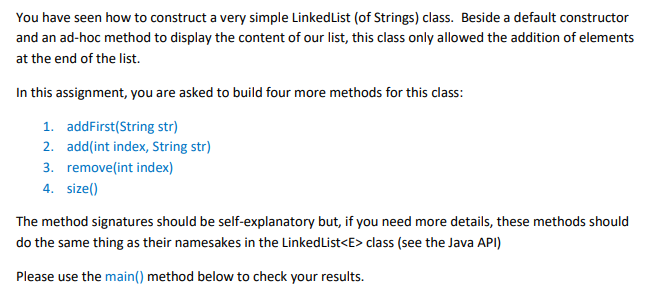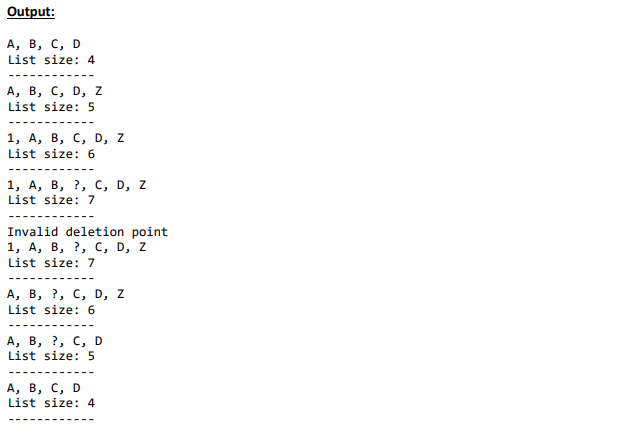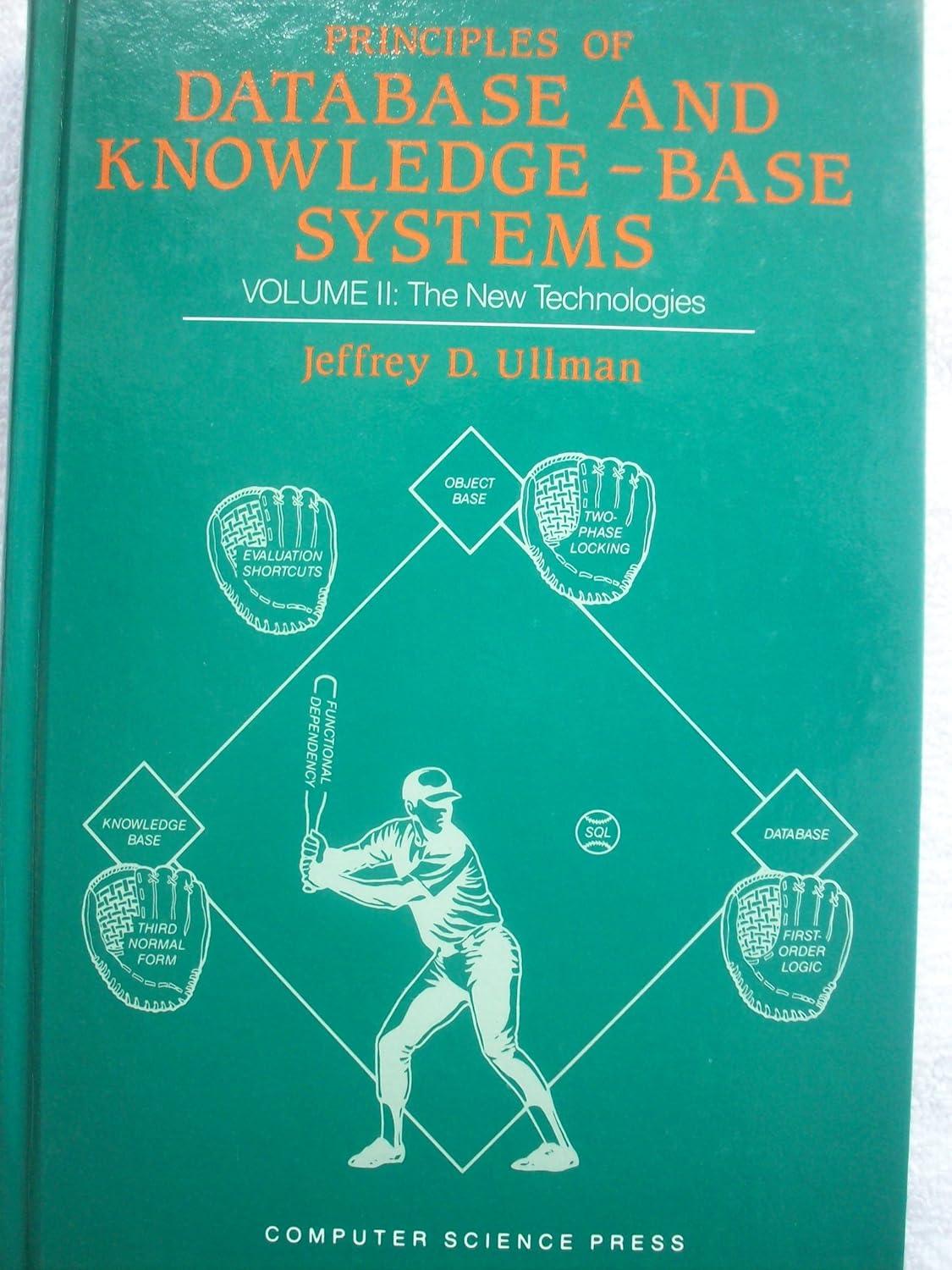Answered step by step
Verified Expert Solution
Question
1 Approved Answer
Java Exercise public static void main(String[] args) { MyLinkedList list = new MyLinkedList(); list.add(A); list.add(B); list.add(C); list.add(D); list.printLinkedList(); System.out.println(List size: + list.size()); System.out.println(------------); list.add(4,
Java Exercise

public static void main(String[] args) { MyLinkedList list = new MyLinkedList(); list.add("A"); list.add("B"); list.add("C"); list.add("D"); list.printLinkedList(); System.out.println("List size: " + list.size()); System.out.println("------------"); list.add(4, "Z"); list.printLinkedList(); System.out.println("List size: " + list.size()); System.out.println("------------"); list.add(0, "1"); list.printLinkedList(); System.out.println("List size: " + list.size()); System.out.println("------------"); list.add(3, "?"); list.printLinkedList(); System.out.println("List size: " + list.size()); System.out.println("------------"); list.remove(7); list.printLinkedList(); System.out.println("List size: " + list.size()); System.out.println("------------"); list.remove(0); list.printLinkedList(); System.out.println("List size: " + list.size()); System.out.println("------------"); list.remove(5); list.printLinkedList(); System.out.println("List size: " + list.size()); System.out.println("------------"); list.remove(2); list.printLinkedList(); System.out.println("List size: " + list.size()); System.out.println("------------"); }
LinkedList Class:
// We keep the list non-generic for simplicity. In fact, we create a Linkedlist of Strings class MyLinkedList { // This is the node inner class private class Node { String str; // Note this is a double linked list (as is the Java LinkedList implementation) // Nodes are aware of both the node before AND after them Node next; Node previous; Node(String str){ this.str = str; } } //----------------------------------------------- private Node head, tail; private int size; // Basic constructor public MyLinkedList() { head = tail = null; size = 0; } // Code to add a node to the LinkedList (and thus add a data element, i.e., here a String) public void add(String str) { if(head == null) { head = new Node(str); tail = head; } else { Node temp = tail; tail.next = new Node(str); tail = tail.next; tail.previous = temp; } size++; } // Traverse the List public void printLinkedList() { Node temp = head; // count is just used for output beautification int count = 0; // While the node is not null (we have not reached past the last node) while(temp != null) { // Should I print a comm or not? if (count != 0) { System.out.print(", "); } System.out.print(temp.str); // Move to the next node temp = temp.next; count++; } System.out.println(); } }

Step by Step Solution
There are 3 Steps involved in it
Step: 1

Get Instant Access to Expert-Tailored Solutions
See step-by-step solutions with expert insights and AI powered tools for academic success
Step: 2

Step: 3

Ace Your Homework with AI
Get the answers you need in no time with our AI-driven, step-by-step assistance
Get Started


